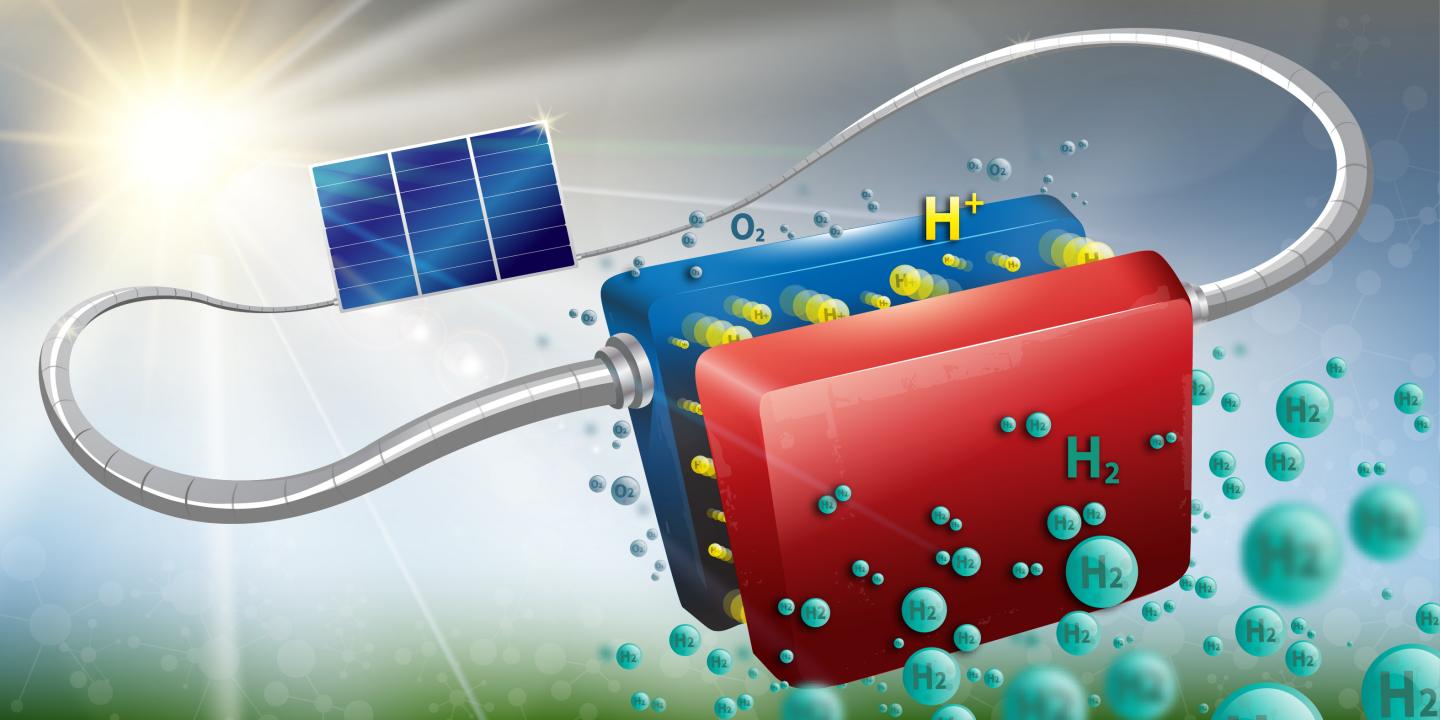
The device is able to convert solar energy into hydrogen at a rate of 14.2 percent, and has already been run for more than 100 hours straight.
Image: Infini Lab/EPFL
One of the biggest barriers between renewables and widespread grid implementation has been the issue of intermittency. How can we meet a nation’s energy demands with solar when the sun goes down?
In an effort to move past these barriers toward a cleaner energy infrastructure, a new paper published in the Journal of The Electrochemical Society describes an effective, low-cost solution for storing solar energy.
The research team from Ecole Polytechnique Fédérale de Lausanne is looking to covert solar energy into hydrogen through water electrolysis. At its core, the concept revolves around using solar-produced electricity to split water molecules into hydrogen and oxygen, leaving clean hydrogen to be stored as future energy or even as a fuel.
But this idea is not new to the scientific community. However, the research published in JES provides answer to continuous barriers in this field related to stability, scaling, and efficiency.
This from Ecole Polytechnique Fédérale de Lausanne:
The approach taken by EPFL and CSEM researchers is to combine components that have already proven effective in industry in order to develop a robust and effective system. Their prototype is made up of three interconnected, new-generation, crystalline silicon solar cells attached to an electrolysis system that does not rely on rare metals. The device is able to convert solar energy into hydrogen at a rate of 14.2%, and has already been run for more than 100 hours straight under test conditions. In terms of performance, this is a world record for silicon solar cells and for hydrogen production without using rare metals. It also offers a high level of stability.
The paper’s co-author, Christophe Ballif, puts this type of energy generation into perspective.
“A 12-14 m2 system installed in Switzerland would allow the generation and storage of enough hydrogen to power a fuel cell car over 10,000 km every year,” says Ballif.
The newly developed system sets itself apart from similar work due to its cost, performance, and lifespan.
“We wanted to develop a high performance system that can work under current conditions,” says Jan-Willem Schüttauf, a researcher at CSEM and co-author of the paper. “The heterojunction cells that we use belong to the family of crystalline silicon cells, which alone account for about 90% of the solar panel market. It is a well-known and robust technology whose lifespan exceeds 25 years.”
Researchers hope to achieve a performance level above 16 percent in the near future.
Read the full paper: “Solar-to-Hydrogen Production at 14.2% Efficiency with Silicon Photovoltaics and Earth-Abundant Electrocatalysts“


